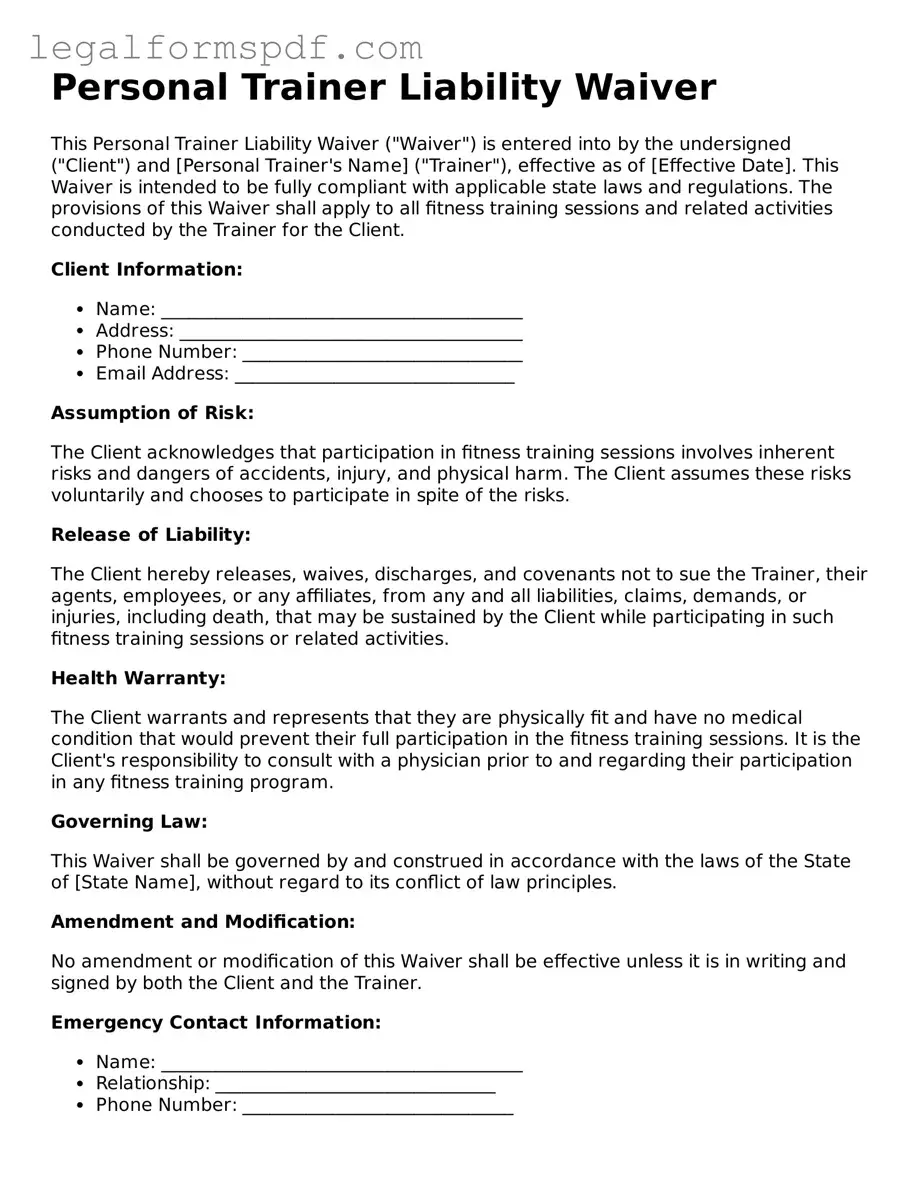What is a Personal Trainer Liability Waiver form?
A Personal Trainer Liability Waiver form is a legal document that clients sign before starting a training program, acknowledging that they are aware of and accept the risks associated with physical exercise. This form helps protect personal trainers from lawsuits in the case of client injuries or health issues attributed to their training program.
Why is a Personal Trainer Liability Waiver form necessary?
This form is necessary because it serves as a precautionary measure for personal trainers, ensuring clients cannot hold them legally responsible for injuries or health problems that may occur as a result of participating in the training program. It encourages clients to take responsibility for their own health and safety while exercising.
What kind of information is included in the form?
The form typically includes client personal information, an acknowledgment of the risks associated with physical activity, a declaration of the client's physical health, and a release of liability clause. It may also detail the client's consent to participate in the exercises and acknowledgment of the trainer's recommendations regarding seeking medical advice before starting.
Is the Personal Trainer Liability Waiver form legally binding?
Yes, when properly completed and signed, it is considered a legally binding agreement between the client and the personal trainer, limiting the trainer's liability in the event of an injury or health issue attributed to the training program.
Do all clients need to sign this waiver?
It is strongly recommended that all clients sign this waiver before beginning any training program. This practice helps ensure that both the client and trainer are protected, and clients are made fully aware of the potential risks involved in physical activity.
Can a minor sign a Personal Trainer Liability Waiver form?
Minors typically cannot legally sign a waiver form on their own. Instead, a parent or legal guardian must sign the form on behalf of the minor, acknowledging the risks and accepting responsibility for their child’s participation in the training program.
What happens if a client refuses to sign the waiver?
If a client refuses to sign the waiver, personal trainers are advised not to proceed with the training program. This refusal leaves the trainer exposed to potential legal risks and liabilities. Trainers can choose to decline to work with clients who do not sign the waiver.
Does the waiver protect personal trainers from all liability?
While the waiver significantly reduces the risk of liability for personal trainers, it does not absolve them of all responsibility. Trainers are still liable for acts of gross negligence or intentional harm. It's important for trainers to maintain professional conduct and adhere to safety standards at all times.
Should the waiver be updated periodically?
Yes, it is good practice to review and update the waiver periodically to ensure compliance with current laws and to reflect any changes in the training program. Legal requirements can vary by state, so trainers should consider consulting a legal professional for advice on staying current.
What steps should personal trainers take after the waiver is signed?
After the waiver is signed, personal trainers should keep the document safely stored for as long as the client is active and for a suitable period after the training relationship ends. It's also advisable to educate clients on safely engaging in physical activities and to continually assess and adjust training programs to meet individual client needs safely.
